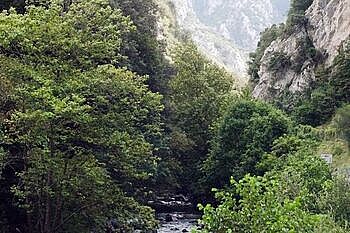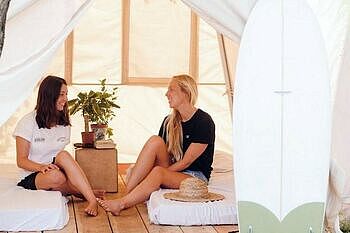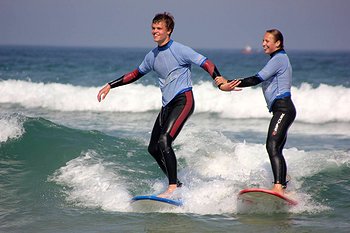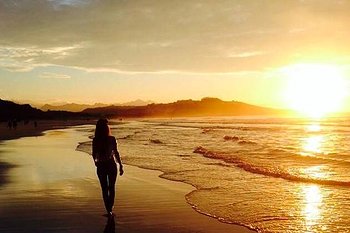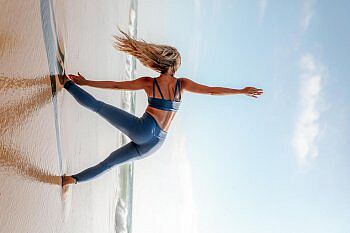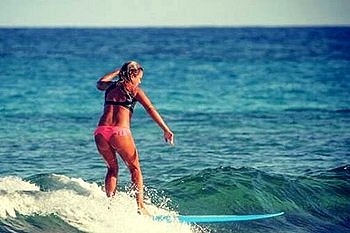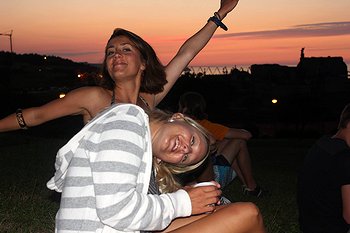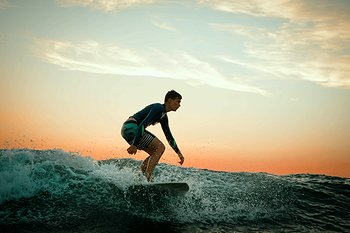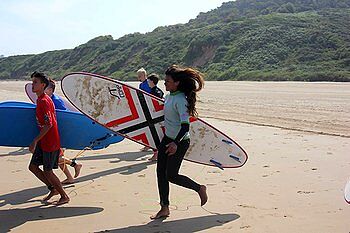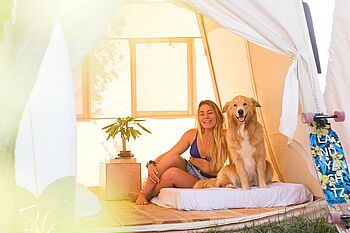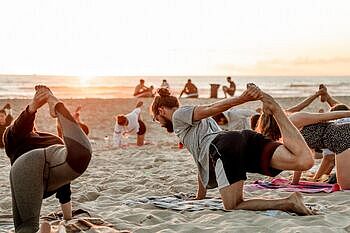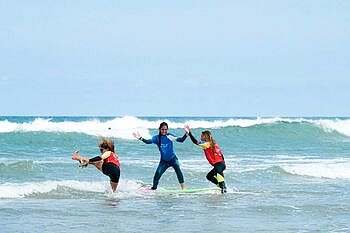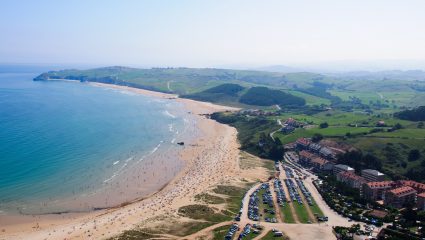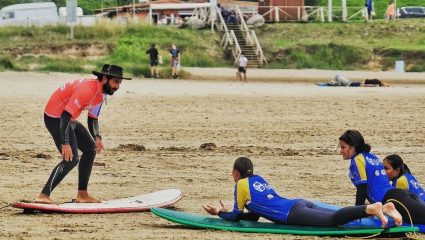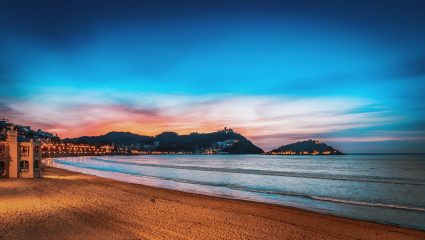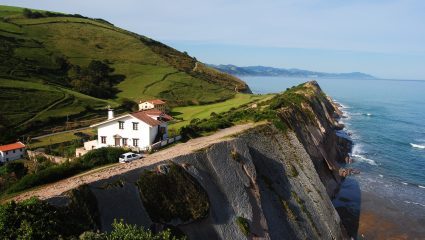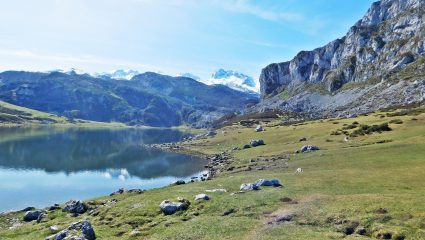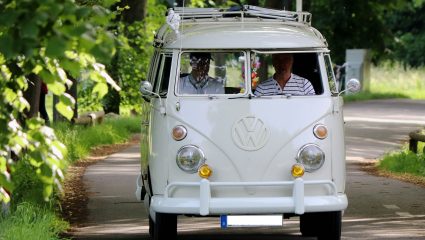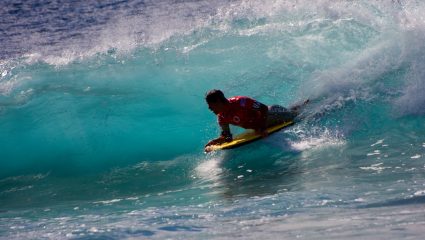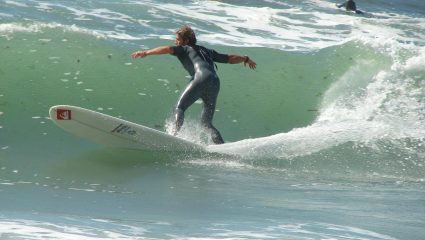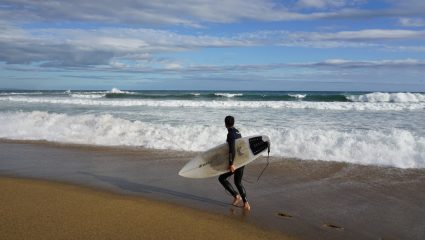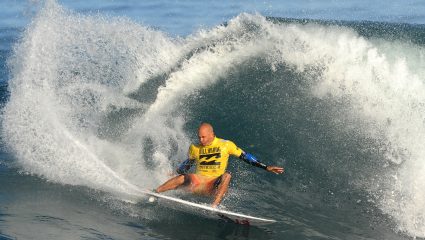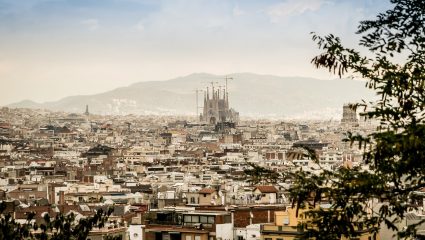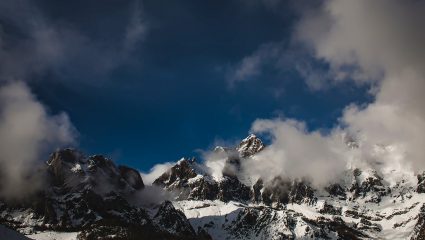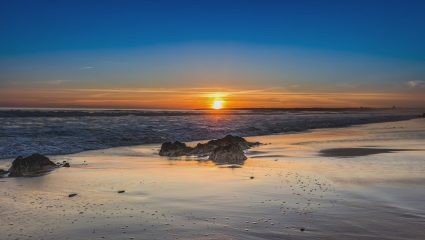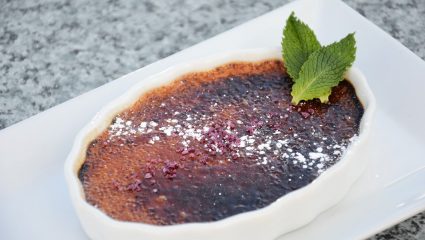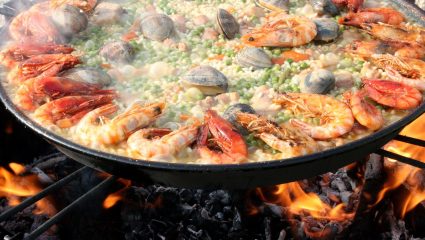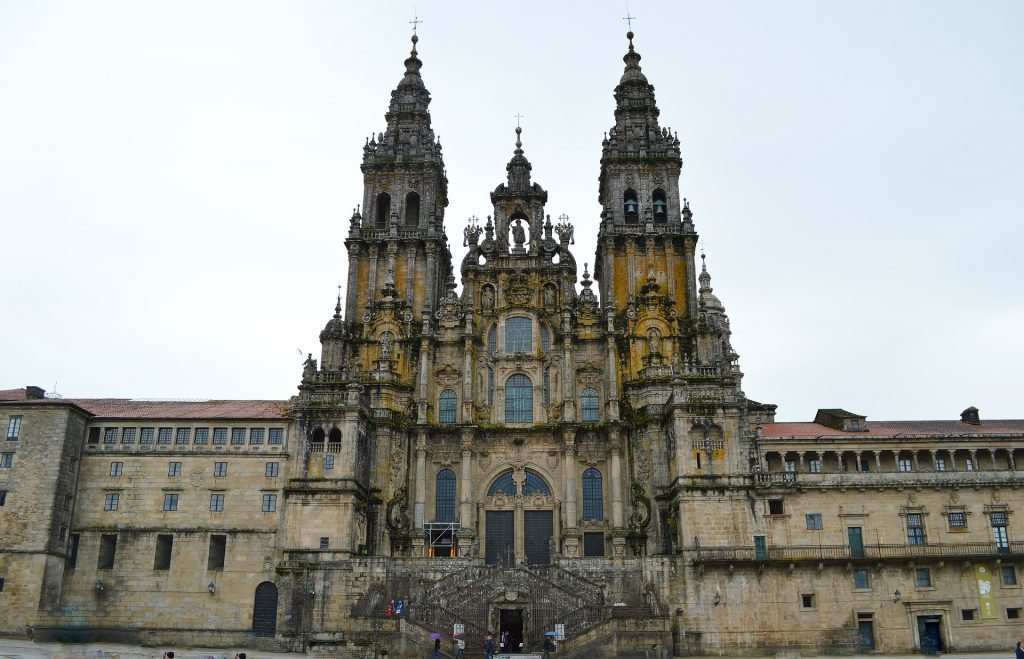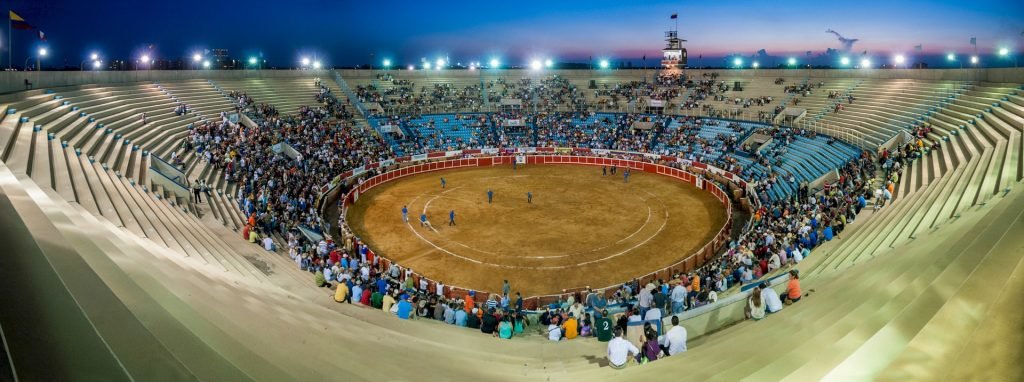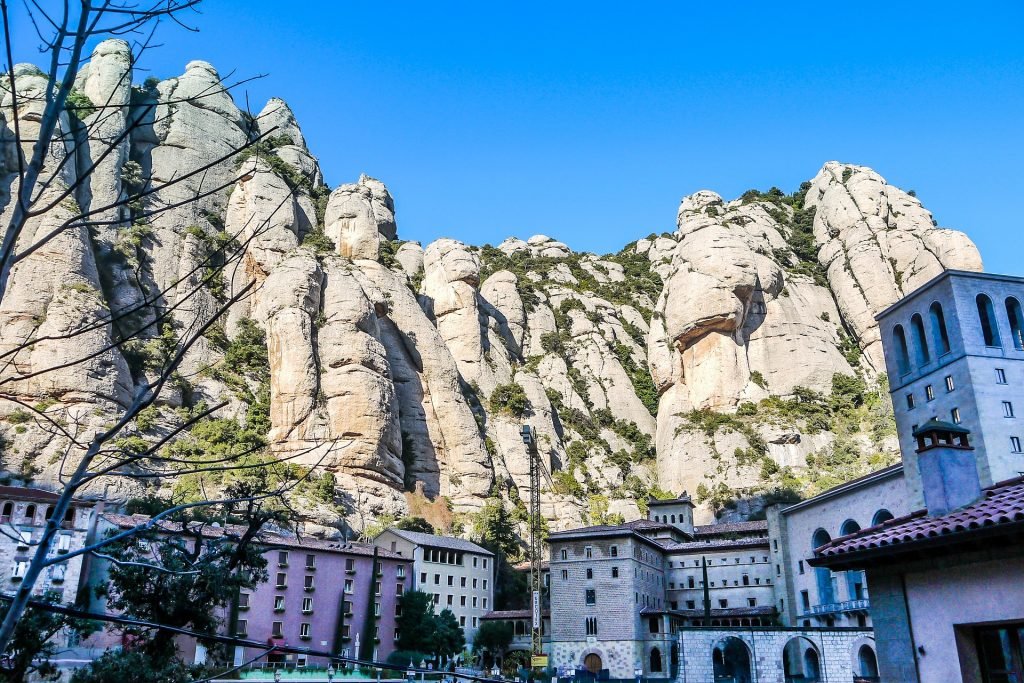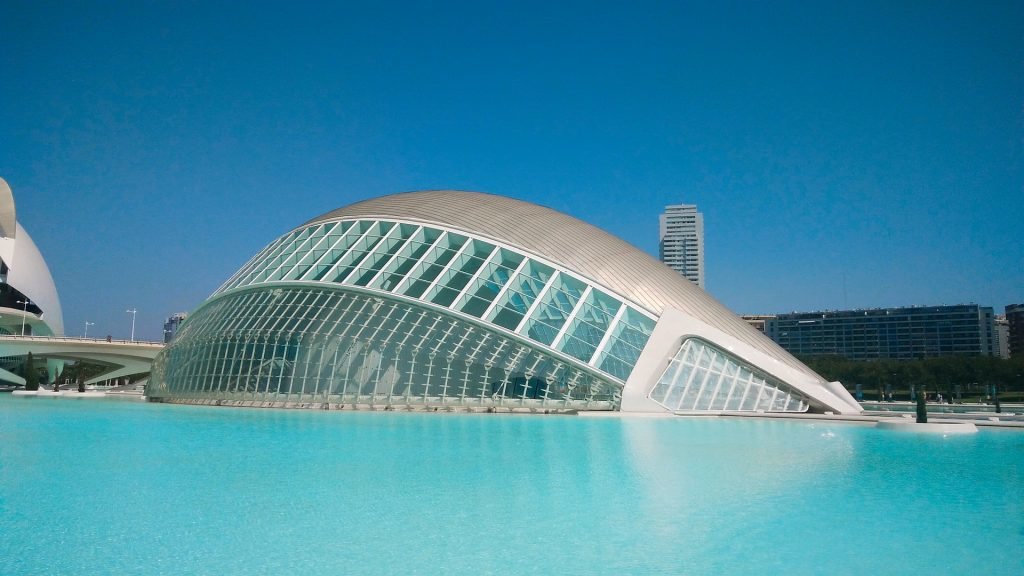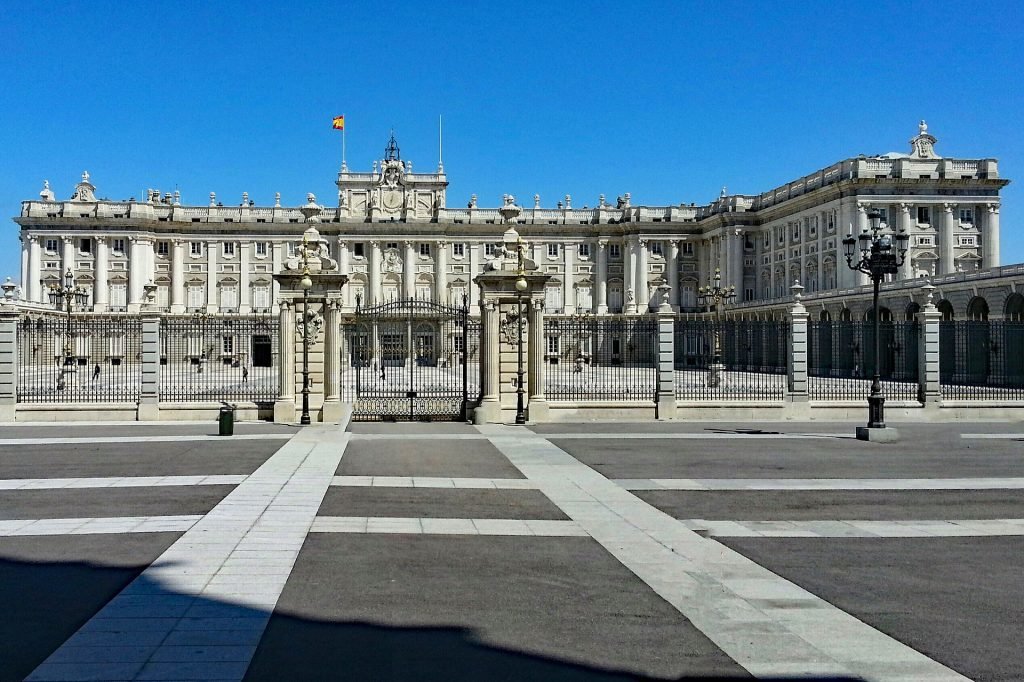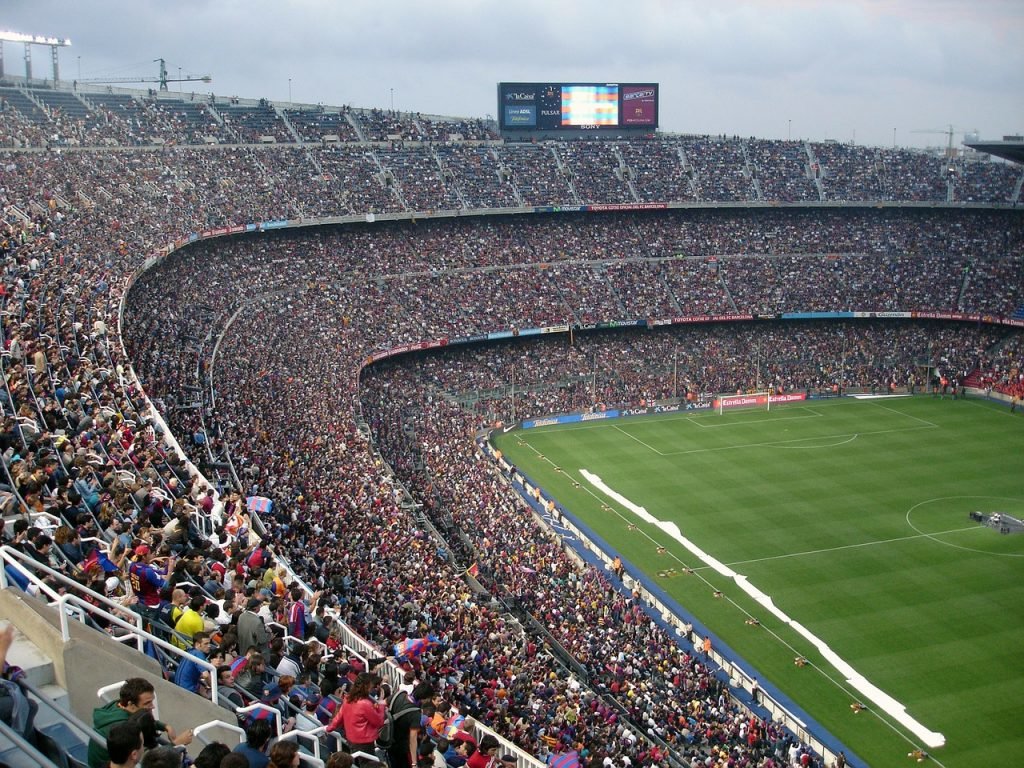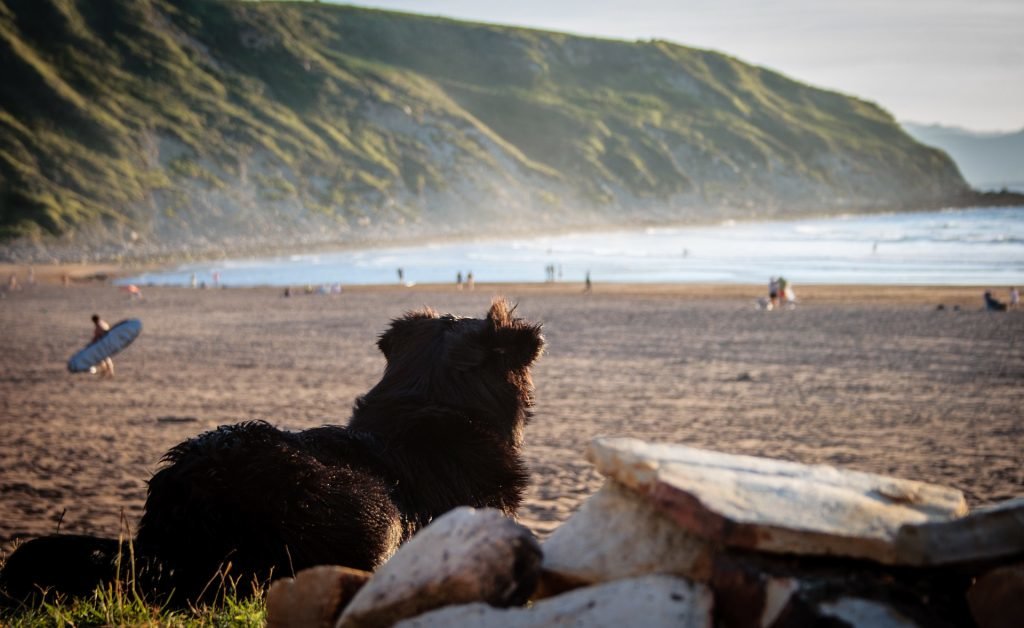Surf Camps Spain - Enjoy the Waves at Spain's Most Beautiful Beaches
Surf Camp Spain Cantabria
Directly on the beach & perfect air connection. Ideal surf conditions on beautiful beaches & nightlife in the historic centre.
7 nights accommodation + full board + 7 days surf equipment + 5 yoga lessons
Opened07/06 - 27/09300EURPP Week for300 €Play VideoSurf Camp Spain Cantabria
Unique beaches & perfect waves directly behind the camp. Cheap flights from different departure points.
14 nights accommodation + full board + 22 surf lessons + 10 yoga lessons + surf material
Opened07/06 - 27/09920EURPP Two Weeks from920 €Play VideoJunior Surf Camp Spain
International surf camp directly on the beach. Perfect waves & spectacular beaches. Fun activities & entertainment of our team.
7 nights accommodation + full board + 22 surf lessons + sport material + fun activities + 5 yoga lessons
Opened14/06 - 13/09600EURPP Week from600 €Play Video
Surfcamps Spanien
Tapas, Fiesta and Smooth Waves
Our two surf camps Spain are situated in the beautiful little town San Vincente de la Barquera by the Atlantic coast. There were many reasons for us to choose this location for our camps, one of them being the fact that it's the perfect place to learn how to surf and improve your skills. Europe has a lot of different surf spots: high quality beach breaks, countless reefs, as well as big wave spots and river estuaries. Beginners, intermediates and advanced surfers can find great spots throughout the whole year.
San Vincente de la Barquera is located in the far north of Spain. This part of Spain has a very consistent swell, greatly increasing the chances of having good surfing conditions. Furthermore, the north of Spain is one of the more beautiful, less touristic places of the Iberian Peninsula, which is why we decided to open our camps here. Depending on where you’re from, the drive to one of our surf camps in Spain might take a little longer than to others – but you can believe us when we say that it’s totally worth it!
Planet Surf Camps Spain Surf Guide with the Best Spots, Tips and Spain Highlights
Planet Surfcamps and Surf Schools in Spain
Beneath France and Portugal Spain is the first choice when it comes to surfing in Europe. Most of all the North offers nice waves for beginners and pros. One of the nicest surf spots is the big bay of San Vicente with its two beaches Playa de Meron and Playa de Gerra. Because of the many different sand banks you're gonna find great waves in every swell direction which break slowly and not too steep most of the time. San Vicente offers a lot, especially for beginners. That's why we built our two surf camps in Spain here.
Both camps are situated on the camping site El Rosal***.
At our Junior Surf Camp we welcome all boys and girls between 14 and 17 years. Surf Camp San Vicente however is for all the surfers and want-to-become-surfers over 18. Both camps offer comfortable 4-bed-tents. Food and varied fun activities are included and you shouldn't miss out on them.
Do you find the topic 'Surfing in Spain' as exciting as we do? Then check out more information about our camps, the Junior Surfcamp and Surf Camp San Vicente de la Barquera.
The Surf Regions
If you're keen of powerful and consistent waves then you won't get around Spain's North. The regions Galicia, Asturia, Cantabria and the Basque country are full of great beach and reef breaks suitable for every surfer's level.
Basque country is the most northern region in Spain and has also a French part. Famous cities are Bilbao and San Sebastián. Especially San Sebastián as the European Capital of Culture 2016 enchants visitors with its charm and small typical Spanish cafes, restaurants and bars. And the best thing about the city: With the Playa de Gros and Playa de la Concha there are two amazing beach breaks in the city center. Our surf camps Moliets, Vieux Boucau and San Vicente de la Barquera offer weekly trips to the unique city, so don't miss out on it!
Cantabria, Asturia and Galicia on the Atlantic coast are famous for their spacious and green landscapes. There are beach parts with super soft sand next to parts with steep rocky cliffs. The waves that are produced here aren't very crowded. Especially in low-season you will find empty spots with sweet conditions to improve your surfing.
For all warm water paddlers there is even the opportunity to catch some waves on a trip to the Spanish Mediterranean Sea coast. You shouldn't expect to much of it though because you'll see surfable waves only at perfect conditions and a big swell. We recommend a city tour to Barcelona because even if the water is flat there are always cool things to do.
Surf Spots
Surfing in Asturias
Rodiles
Rodiles is maybe the best left in Asturias but it needs a lot of swell to work. Unfortunately it's also crowded - if you're around anyway you should still go there. Best conditions are at low tide in winter. Wave size can be 5 to 10 feet.
Salinas
One of the most popular beach breaks in Asturias that reaches from El Espartal to Salinas. In the west there are some peaks that are suitable for beginners, on the eastern beach part the waves are steeper and more challenging. Good conditions can even form fat hollow barrels. Because of the varied sand banks it's possible to rip the waves at low tide same as high tide. Swell range is between 3 and 8 feet.
Surfing in Cantabria
La Fortaleza
A long point break which isn't only for experienced surfers. In autumn and winter the swell range is up to 8 feet.
La Langre
A beautiful sand beach that's surrounded by bold cliffs. Thanks to the protected location only a few surfers go astray here. So if you're in search for empty line-ups come here.
Playa de Meron and Playa de Gerra
The two beaches are located right in front of the small village San Vicente de la Barquera. Whether the swell is tiny or pumping like crazy you're gonna find surfable waves which break slowly, relaxed and they don't get too big as well (2-6 ft). Perfect conditions for beginners and intermediates. If San Vicente appeals to you check out our surf camp.
Surfing in Basque Country
Mundaka
Probably the longest left wave in Europe breaks in front of the same-named fishing village. 200 meter rides through perfect barrels make even international pros pick up their ears. Until 2009 there was even one of the very little Spanish pro contests taking place here. Due to the uncontrolled sand back destruction the wave doesn't offer these dreamy rides too often today. Only on 50 days a year Mundaka works really good and in summertime the sea is flat most of the time. But if you're really lucky you can meet surf legend Kelly Slater here. When the big swell rolls in with up to 12 feet the line up is riddled with local heroes and you should enter the water only if you're really skilled.
Zarautz
A beach break that works already with a small swell. Nevertheless the waves are demanding and the main peak is pretty crowded. Beginners should go out with a surf school, even if the swell goes up to 6 ft max.
Surfing in Galicia
Nemina
A beach break that runs at all tides. You'll find many good peaks and the spot isn't very crowded. Therefore Nemina is a real sleeper. The swell height is 3 to 8 ft.
Travel Time, Flight and Transfer on Site
Travel Time
Surfing in Spain is fun all year long. Especially in winter, Spain attracts advanced surfers when big swell is pumping. You should pack a thick wetsuit though because 13 degrees water temperature can be quite freezing. You can catch some big waves in summer as well but generally the ocean is much calmer then and that's when beginners and intermediates find salvation here. Always check the conditions before your book!
Travelling by Plane
The big Spanish airports like Barcelona, Madrid or Malaga get approached by all the big European airports. If you're about to head for our surf camps in North Spain or France you should choose either Bilbao or San Sebastián in the North. Cheapest is Iberia, Easy Jet and Ryan Air. Check the best flights at Skyscanner. If you travel with your board you should catch up on the surf board fees.
Travelling by Bus
There are numerous bus connections between the Spanish towns. The most important junctions are Madrid and Barcelona. From here you get to every region in Spain by bus or train at ease. At Movelia you'll find exact connections.
Travelling by Train
The high speed train network in Spain is large and connects all the bigger towns. You'll find an overview about the important routes at ESPANA.
Travelling by Car
Spain has a comparable road network like Germany. The most relaxing way to explore Spain's coast is probably a van. You have enough space in your car, can save money for accommodation and absorb the real surf vibes to the fullest. Don't forget to stash some change in your pocket for the toll that can get pretty expensive.
The History of Surfing in Spain
José Luis Elejoste developed the first board in Spain between 1940 and 1950. At the beginning it wasn't more than a short board made of wood that's suited for bodyboarding. But when young Spanish guys watched him having his first rides they turned euphoric and a trend was established.
Some years later Elojeste got impressed when he saw Hawaiian surfers on a screen in a small cinema in Bilbao who minced forth and back on their longboards. After he failed to snatch one of these boards he just built his own longboard, the first one in Spain. As expected, many followed his lead and after a short period of time surfing in Spain couldn't be thought away anymore.
Surf Events in Spain
The Billabong Pro Mundaka Surf Contest was an international event in Europe until 2009. Even pros like Kelly Slater got attracted. But as the natural sand banks got slowly destroyed, the wave works inconstantly today and the contest dwindled in importance.
Today there are five venues for international surf contests in Spain. Highlight is probably the Pantín Classic Galicia Pro where the pros surf for 200,000 prize money. Who shows the most rapid turns, cleanest rides and narliest aerials this year?
Since this year also Barcelona is part of the program. In October surfers, skaters and fans meet at the Barcelona Surfing Weekend. The most important thing here are of course the laid-back vibes and parties because Barcelona isn't really famous for the big swells.
Who's into Big Wave Surfing shouldn't miss out on the Punta Galea Challenge. Pros throw themselves into double to triple overhead waves in front of the red rock Bizkaia to experience the ultimate thrill.
Culture in Spain
In the Kingdom of Spain live 46 million people that speak six different types of Spanish. Especially young people in the big conurbations all speak English. Don't bank on talking English everywhere you go but don't you worry! The Spanish population is well-known for its frankness. So if it's not possible to communicate verbally there's still your hands and feet to make the people understand.
Beneath the great surf spots, Spain has a lot more to offer. For example impressing architecture in the world city Barcelona, small and giant fiestas and of course the great variety of tapas. For more ideas and opportunities in Spain check out our highlights.
Weather, Climate and Water Temperature
Weather and climate in Spain depends strongly on your location. In the north where most of the good surf spots are situated you have to put up with the Atlantic climate. Mild temperatures are typical all year long. In summertime, the average temperature is around 18 degrees and in winter 10 degrees.
In the centre of Spain the climate is continental and temperatures range between 5 and 24 degrees. The summer is often very dry and hardly bearable.
Spain's Mediterranean coast offers similar temperatures but the air is more humid and there is more rain what makes life more pleasant.
More pleasant is also the water temperature in the Mediterranean regions. It can get up to 25 degrees and in winter rarely colder than 13 degrees. On the Atlantic coast the temperature range is 11 to 21 degrees. So don't forget to pack your thickest wetsuit!
Food in Spain
Of course we provide you with super delicious and healthy food at our surf camps but there are some highlights in the Spanish cuisine that you shouldn't miss out when you go for a dinner outside the camp.
Paella
Top priority has of course the Spanish national dish Paella. Typically, you eat it for lunch. The basis is a rice that's been spiced with saffron. Other ingredients are peas, beans, peppers and chicken meat. There are as many Paella variations as chefs in Spain though. One of the most popular ones, especially in coast regions, is the one prepared with sea fruits.
Tapas
Another specialty which you connect instantly with Spain are the many tiny Tapas. Normally, you hop from bar to bar with a group of people, order Tapas and share them. Very popular are Albóndigas (meat balls), Boquerones en Vinagre (in vinegar marinated anchovies), Boquerones fritos (deep-fried anchovies) Ensaladilla Rusa (potato salad), Gambas al ajillo (fried prawns in olive oil and with chili and lots of garlic), Tortilla (Spanish omelette) and more, more, more. Just feast through the menu!
Spanish Deserts
Who's keen of something sweet doesn't search for too long. How about the Crema Catalana (Desert with caramel topping), Tortas de Aceite (sweet pastries) and Arroz con Leche (Spanish milk rice)
Top 10 Spain Highlights
1. Cathedral of Santiago de Compostela
The impressive cathedral sets the end of the Way of St. Jacobs. It's an absolute must among pilgrims and tourists on a Spain trip. The construction started in 1075 and hasn't finished yet. By this time the area is 23,000m² large what corresponds 3 to 4 football fields.
2. Barcelona
Spain isn't only great as a surf country. There's so much to explore in the third most visited country on earth. If the swell doesn't hit the coast you should definitely go to Barcelona as an alternative. The city is one of the most beautiful cities in the world. You can spend years here, do lots of new things every day and still get surprised by magic places you haven't seen before. If you find the time to spend some days here you should visit Gaudi's Sagrada Familia, the incomplete church. The construction started in 1882 and hasn't been finished yet. Who likes the church's veneer will love the playful interior.
The Mercat de la Borqueria is one of the biggest European groceries markets where you can try and buy specialties from all the Spanish regions or just pass time strolling around.
At night grab some Tapas and a beer on the beach promenade and jump into the vivid nightlife.
3. San Sebastián
Beneath Barcelona San Sebastián is one of the nicest places in Spain. It has a beautiful bay that opens to the Atlantic ocean and conjures a smile on everybody's face. The architecture is very beautiful e.g. the town hall, the Palacio Miramar or the town beach.
If you're on holiday at one of our surf camps in North Spain or South France you should definitely join the weekly trip to San Seb. We show you the city highlights, go eating Tapas with you and party through the night.
4. Plaza de Toros
A bull ring in Ronda that was built in 1789. It's made of sand stone and the style is plain and unagitated. The Plaza de Toros is regarded the pioneer of all the arenas in Spain and is undoubtedly the most imposing one. Despite the structure, there is also a museum about the history of bullfight and you can witness a Torero fight live - if you're keen on the martial spectacle.
5. Kloster Montserrat
A visit to the cloister is perfect suitable as a one day trip from Barcelona. It's situated right in the Montserrat mountains. Come here before sunset and you're gonna have an amazing view.
6. Valencia
Also the third biggest city in Spain shouldn't be underestimated. La Ciudad de las Artes y de las Ciencias, City of Arts and Sciences is located around the dried-up river Turia. Santiago Calatrava designed the city including L'Umbracle, a giant garden and also Europe's biggest Aquarium L'Oceangràfic. Too much sightseeing and city life for your teste? Check out the Mercat Central then, one of most famous markets in Europe. Here you'll find the best regional cheese, meat, vegetables, fruits, fresh fish and sea fruits.
7. Palacio Real
Madrid can't keep up with the glance of many Spanish cities but the Palacio Real is always worth a visit. The royal family lives in the Zarzuela palace today which is outside of Madrid so you can easily marvel at the splendid palace.
8. La Alhambra
Situated on Sabikah hill in Granada is one of the most famous fortifications on earth: Alhambra. You're gonna explore more than one castle so arrange enough time.
9. San Vicente de la Barquera
San Vicente is a wonderful fishing village on the Atlantic coast. Right inside the city is an old fortress where medieval markets and fiestas take place regularly. Only a few minutes afoot is a kilometer long sand beach that is framed by green cliffs. Expect daily nice waves that roll in slowly and eased. And the best about it: Right next to the beach are our surf camps in Spain. The Surf Camp San Vicente de la Barquera and Junior Surf Camp offer a super chilled atmosphere. We go surfing with you until you're completely stoked and after that we're gonna party decently or have a laid-back jam session.
10. Camp Nou
Perhaps a football stadium isn't what you expect as a typical sight. But with space for about 100,000 spectators, the Camp Nou is probably more impressive than most of the churches and fortresses. There is a museum and even a chapel inside the stadium to prepare yourself spiritually for the game. We recommend the tour 'Camp Nou Experience'. In this tour you can step on the field and experience the FC Barcelona feeling up close. Més que un club!
Why Spain with Planet Surfcamps?
Uncountable perfect beach breaks for beginners, intermediates and even pros. That makes Spain a perfect surf destination. A trip along the Iberian Atlantic coast should be made at least once a life time. There's always a good spot that works and also if you have enough of surfing for the day there are plenty of alternatives. Spanish people are very relaxed and as well as the Spanish fiestas.
But why Planet Surfcamps? Particularly for beginners and intermediates it's really hard to manage a new spot. Therefore we guarantee you fun and the maximum wave yield. That's what our licensed surf instructors make sure inside and outside the water. Life in the surf camp is chilled and you're gonna meet cool people who share the same passion with you. Surfing is much more fun together!





